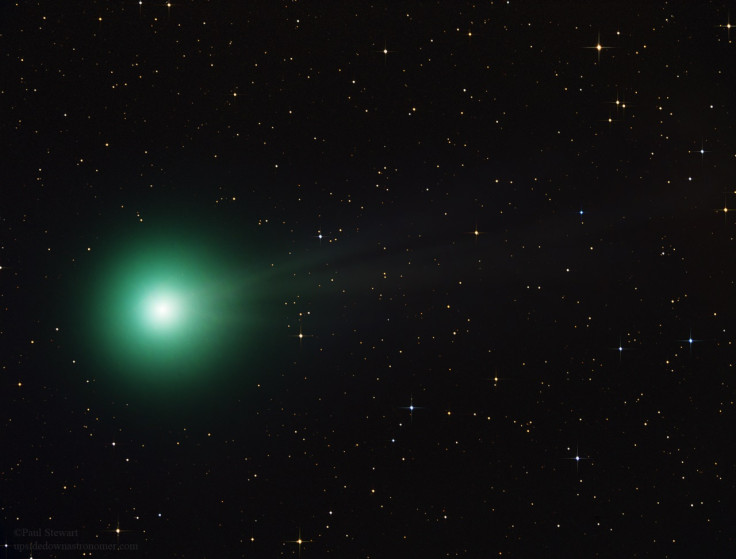ISS astronauts tweet images of Comet F3 Neowise as it is on its closest approach to Earth
Comet F3 NEOWISE is the first visible comet of the year 2020.
The newly discovered comet is at its closest approach to Earth and will be visible from the naked eye this month. As it becomes the first visible comet of this year, astronauts from the International Space Station (ISS) have captured some spectacular images showcasing C/2020 F3 (NEOWISE) in action.
In the photos taken from ISS, the comet is streaking across the sky as it comes in the view of ISS. The pictures show the comet and its illuminated tail darting towards Earth. Despite its movement around the planet, it is not a threat as it is simply passing through the Solar System.
Behnken tweeted the pictures from ISS and described it as "last night's fireworks."
Last night's fireworks, for real. Because Science. #NEOWISE #comet pic.twitter.com/IKcJ1wLFAl
— Bob Behnken (@AstroBehnken) July 5, 2020
"Last night's fireworks, for real. Because Science," Behnken wrote on a tweet, posting four pictures.
Ðа Ñледующем витке попробовал чуть ближе Ñфотографировать Ñамую Ñркую за поÑледние 7 лет комету C/2020 F3 (NEOWISE).
— Ivan Vagner (@ivan_mks63) July 4, 2020
Довольно хорошо видно ее хвоÑÑ‚ из коÑмоÑа, Ñ Ð±Ð¾Ñ€Ñ‚Ð° Международной коÑмичеÑкой Ñтанции!#МКС #комета #NEOWISE pic.twitter.com/zo7INtT01l
Cosmonaut Ivan Vagner also posted a stunning image with a caption in Russian. "In the next round I tried to take a little closer photograph of the brightest comet C / 2020 F3 (NEOWISE) in the last 7 years. Her tail is quite clearly visible from outer space, from the International Space Station!," reads the caption as translated by Google on Twitter.
The comet is a retrograde comet that was discovered on March 27, this year by NASA's Near Earth Object Wide-field Infrared Survey Explorer (NEOWISE) space telescope. On July 3, F3 made its initial approach to the sun, according to Earth Sky. Passing at about 26.7 million miles away from the sun, it is believed to have survived the close encounter. Therefore, it is expected to remain visible to the naked eye from the earth throughout July.

As per the website, the comet is currently best visible in the dawn sky until Saturday. After this, it approaches the horizon and by mid-July, it is best visible after sunset lying low in the northwest horizon. On Wednesday, July 22 and Thursday, July 23, the comet will come closest to Earth and pass at some 64 million miles from our planet. It is said that the comet will be best visible at night with a pair of binoculars.
© Copyright IBTimes 2025. All rights reserved.





















